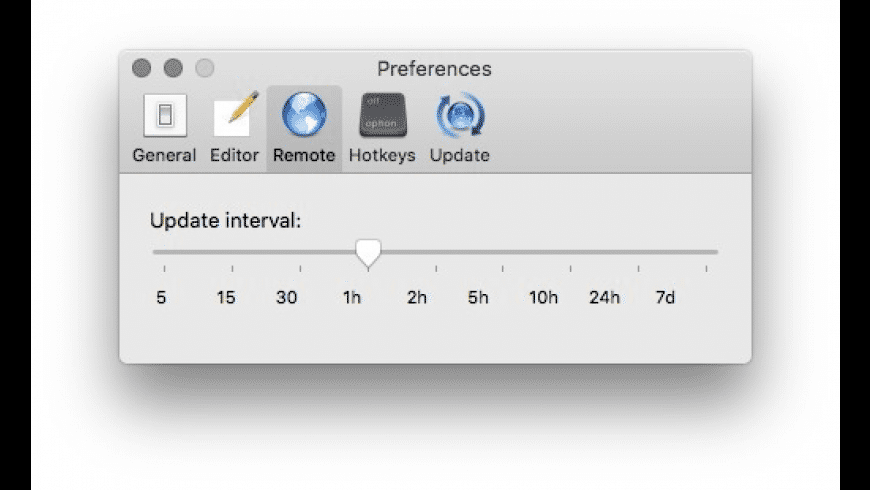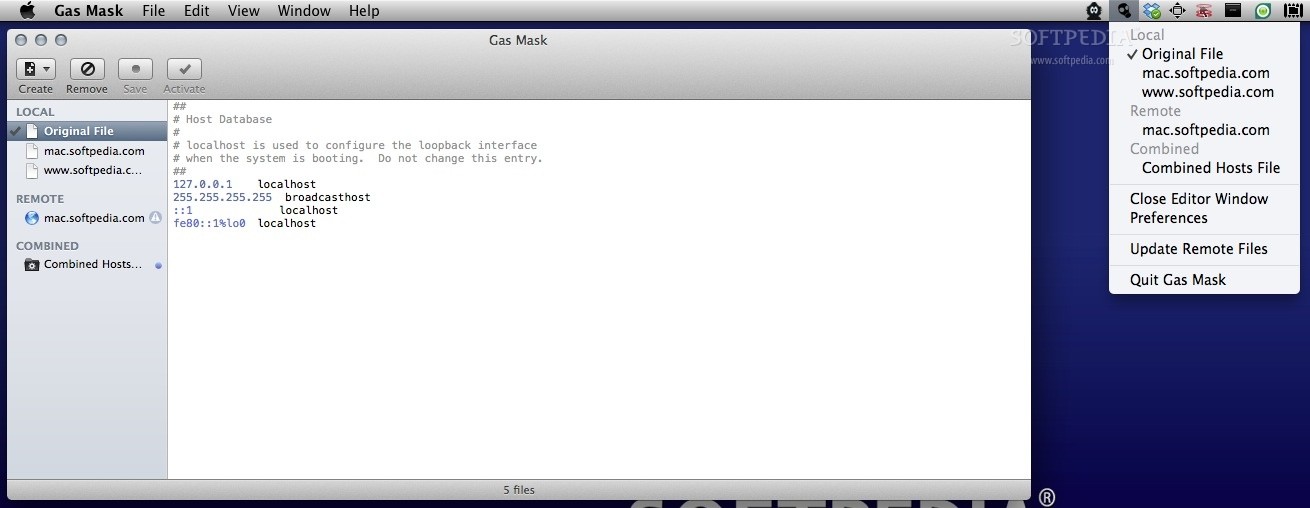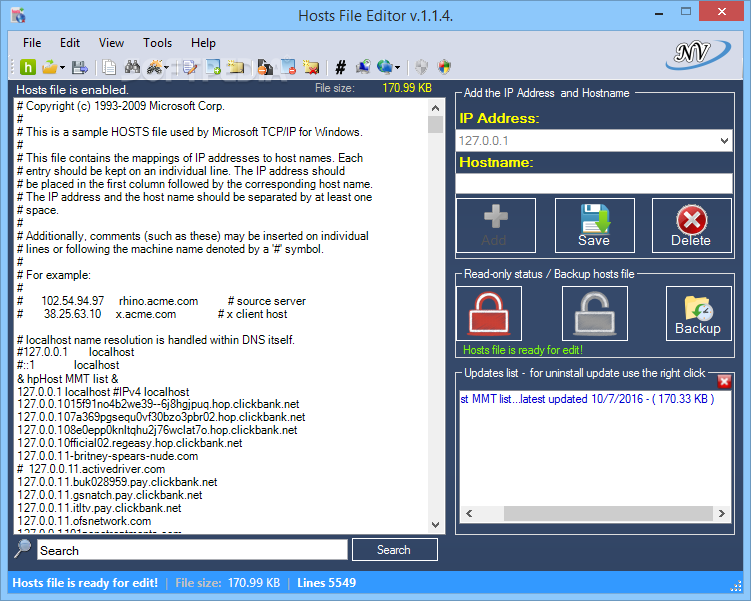- Hosts Editor For Mac Shortcut
- Hosts Editor For Mac Windows 10
- Hosts File Editor
- Hosts Editor For Mac Os
The hosts file is one of the important network files of any operating system. We all know about DNS, which maps I.P. address to a domain address. For example, when you type ShoutMeTech.com in your browser URL, your internet connection queries DNS system of your I.S.P. to find the I.P. address and thus serve website in your browser.
User-friendly hosts file editor and manager that works with local and remote sources. Offers you the possibility to create and edit locally stored hosts file, or connect to online resources and view their content in an editor that comes with syntax highlighting support. / private / etc / hosts. And click 'Go.' There will open a system folder in which the Hosts file is located. To start editing it, you need to right-click on it and select the editor that you would prefer to work with (you can use the standard TextEdit). In the window that opens, you can edit the Hosts. How to Edit Hosts File on Mac. By editing Mac hosts file, it's possible to emulate DNS change and set the desired IP for a domain name. With the hosts file you can overwrite any DNS values set by your Internet service provider. This is helpful if your domain name is not yet registered or not pointed to a hosting account, but you want to preview your website.
- You don't own the file 'hosts' and don't have permission to write to it. This is the default location of hosts file in Mac OS X: /private/etc/hosts. And, here is the way to edit the file. Open terminal and type this command: sudo nano /private/etc/hosts.
- All in all, you should definitely give iHosts a spin if you're looking for a simple way to organize the records in your Mac's /etc/hosts file without having to use the command line to edit the file directly. Hosts editor Edit hosts Hosts viewer Hosts Editor Viewer Edit.

This also brought the concept of Public DNS, which I have already discussed in detailed earlier (Using Google DNS to speed up The internet). Similarly, Hosts file is for your local computer.
You can add custom detail in your Hosts file, and before checking DNS, your system will check operating system hosts file for any reference. For example, if you add Google.com I.P. address for Facebook.com domain in your OS Hosts file, when ever someone will type Facebook.com in the browser URL, Google.com will be open in the browser. (A great idea for prank too). Anyways, I will not get into detailed explanation of DNS and Hosts file, but if you are interested to learn these basics (you should), here are few articles for your reference:
Hosts Editor For Mac Shortcut


- Hosts file from Wiki (Can be used to find location of Hosts file in different computer OS)
Editing Hosts file in Mac using Nano:
At the time of writing this article, I'm using Mac 10.8.4, and whenever I try to edit the hosts file using Text editor, I see the Locked error. I couldn't find any option to unlock the Hosts file, and edit it using Mac Text Editor. Here is the error that I got, while trying to edit hosts file:
You don't own the file 'hosts' and don't have permission to write to it. Super mario bros for mac os.
This is the default location of hosts file in Mac OS X:
And, here is the way to edit the file. Open terminal and type this command:
And it will ask your system password once you enter the password, you will see a screen like this:
Nano is the terminal editor, and if you wish to learn all the commands of this editor, here is a handy reference. Now, use your cursor to move, and edit the hosts file according to your requirement. Once you are done making changes, click on
Hosts Editor For Mac Windows 10

This also brought the concept of Public DNS, which I have already discussed in detailed earlier (Using Google DNS to speed up The internet). Similarly, Hosts file is for your local computer.
You can add custom detail in your Hosts file, and before checking DNS, your system will check operating system hosts file for any reference. For example, if you add Google.com I.P. address for Facebook.com domain in your OS Hosts file, when ever someone will type Facebook.com in the browser URL, Google.com will be open in the browser. (A great idea for prank too). Anyways, I will not get into detailed explanation of DNS and Hosts file, but if you are interested to learn these basics (you should), here are few articles for your reference:
Hosts Editor For Mac Shortcut
- Hosts file from Wiki (Can be used to find location of Hosts file in different computer OS)
Editing Hosts file in Mac using Nano:
At the time of writing this article, I'm using Mac 10.8.4, and whenever I try to edit the hosts file using Text editor, I see the Locked error. I couldn't find any option to unlock the Hosts file, and edit it using Mac Text Editor. Here is the error that I got, while trying to edit hosts file:
You don't own the file 'hosts' and don't have permission to write to it. Super mario bros for mac os.
This is the default location of hosts file in Mac OS X:
And, here is the way to edit the file. Open terminal and type this command:
And it will ask your system password once you enter the password, you will see a screen like this:
Nano is the terminal editor, and if you wish to learn all the commands of this editor, here is a handy reference. Now, use your cursor to move, and edit the hosts file according to your requirement. Once you are done making changes, click on
Hosts Editor For Mac Windows 10
- Ctrl+ 0 : Click Enter after that. (This will save your output)
- Ctrl + X: This will exit the Nano editor.
Hosts File Editor
Update: You can download this Mac app call Gasmasks to edit hosts file quickly.
Hosts Editor For Mac Os
It took me 15 minutes to find the solution to locked hosts file issue in Mac, and I hope this article will save your precious time. If you are still stuck or have any question, feel free to ask me via comments. Do check out our other articles on general-tech, and you will learn something new today.
